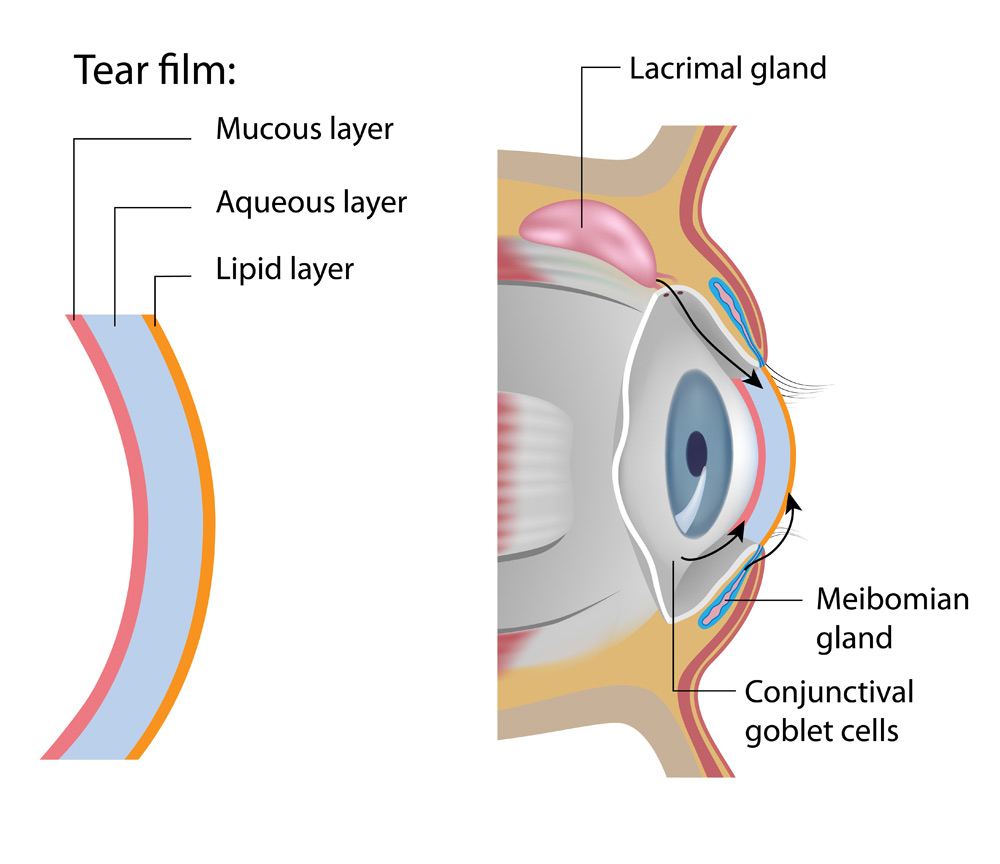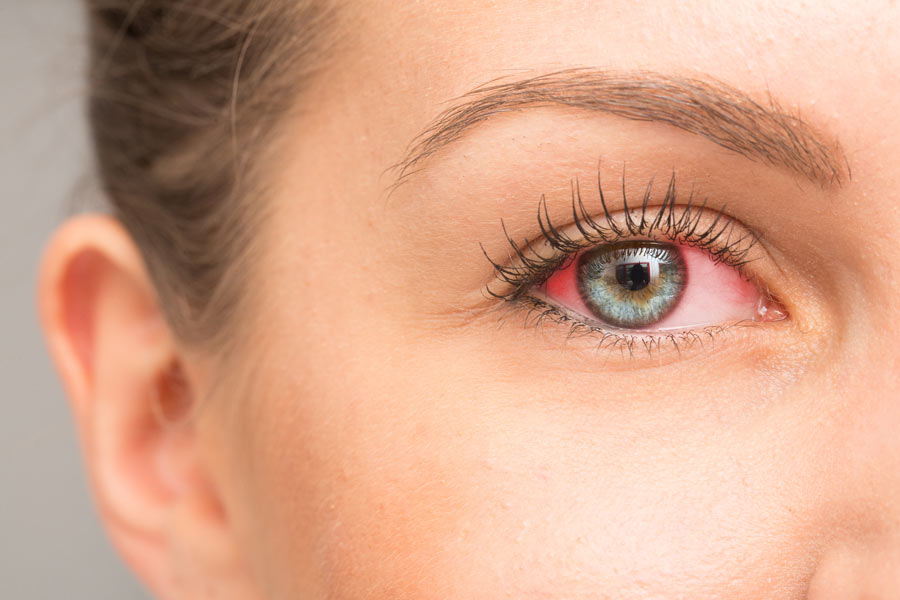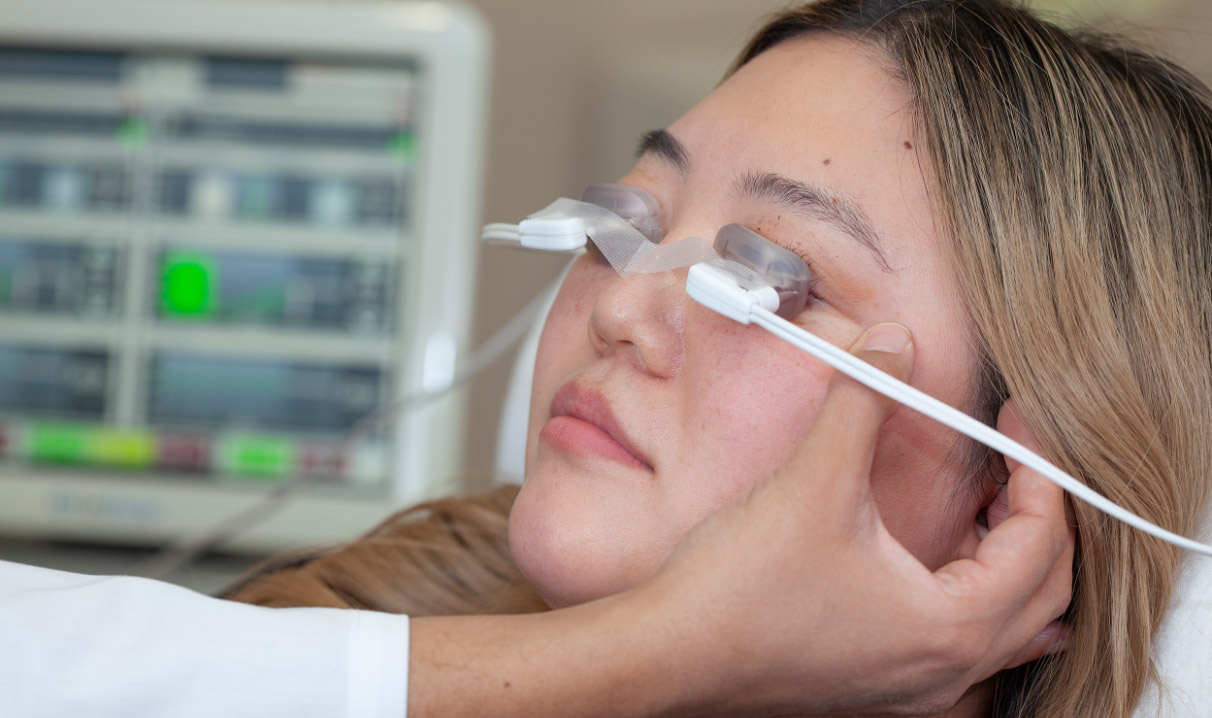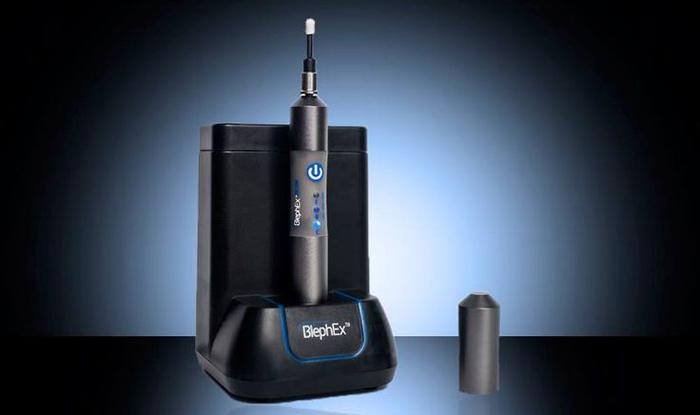Dry Eye Diagnosis and Treatment, Elkhorn, NE
Every time you blink, tears are spread across the front surface of your eye. These tears wash away foreign matter and keep the front surface of the eye smooth and clear. The condition known as dry eye occurs when the eyes either do not make enough tears or the tears are of poor quality and can become a chronic condition.

At Omaha Primary EyeCare in Elkhorn, NE, we provide comprehensive dry eye diagnosis and treatment services to help relieve the discomfort and irritation caused by this common condition. Our experienced eye doctors use state-of-the-art technology to accurately diagnose and treat dry eye syndrome.
What are the symptoms of dry eye?
Dry eye symptoms are uncomfortable. If the dry eye is chronic and advanced, it can damage the front surface of the eye and impair vision.

- Blurred vision
- Red or burning eyes
- The sensation that something scratchy
is stuck in your eye - Recurring irritation that causes teary eyes
- Stringy mucus surrounding your eyes
- Sensitivity to light
Relief from these symptoms is possible! If you have been experiencing dry eye symptoms, our optometrists at Omaha Primary Eye Care are here to help.
What causes dry eye?
Dry eye can develop for many different reasons. Finding the underlying cause is critical to determining the best treatment for your specific case. Here are some of the common causes of dry eye syndrome:
Aging
Aging is a risk factor for dry eye, as dry eye can develop as a natural part of the aging process. Many people over 65 experience dry eye symptoms.
Gender
Women are at an increased risk of developing dry eye. Hormonal changes caused by pregnancy, menopause, and the use of oral contraceptives can lead to dry eye symptoms.
Certain medical conditions
Certain medical conditions, such as rheumatoid arthritis and Sjogren’s syndrome, can lead to dry eye disease.
Meibomian gland dysfunction
Meibomian gland dysfunction (MGD) is a common condition that occurs when the meibomian glands, located in the eyelids, become clogged or blocked. These small glands play a crucial role in producing an oily substance that helps lubricate the eye and prevent excessive tear evaporation. When these glands experience blockages, the production of this essential oil is disrupted, leading to an imbalance in the tear film and resulting in dry eye symptoms.
learn more
As one of the leading causes of dry eye disease, MGD can significantly impact your eye health and comfort. It is particularly prevalent in individuals with a history of blepharitis or inflammation of the eyelids. Symptoms of MGD can manifest as eye discomfort, redness, a sensation of grittiness, and a feeling of burning or stinging in the eyes. In more severe cases, MGD may even cause thickened or irregular eyelid margins and the formation of meibomian cysts known as chalazia.
Medications
Certain medications can also cause dry eye as a side effect. Antihistamines, for example, which are commonly used to treat allergies, work by blocking histamine, a substance in the body that causes allergic symptoms. However, they also block other chemicals that are needed for tear production, leading to dry eye.
Antidepressants are another group of medications that can cause dry eye. These drugs work by changing the levels of certain neurotransmitters in the brain, but they can also affect the body’s ability to produce tears.
Blepharitis
Blepharitis is a condition in which the eyelids become inflamed. This inflammation can occur due to several factors, such as bacterial infection, overgrowth of normal eyelid bacteria, or an allergic reaction. It can also be caused by a blockage in the oil glands located in the eyelids, leading to dry eye disease. When the eyelids are inflamed, they can cause a variety of symptoms, including redness, itching, burning, grittiness, and crusting at the base of the eyelashes.
learn more
In some cases, blepharitis may lead to complications, such as styes and chalazia. These are painful bumps that form on the eyelids due to inflammation of the oil glands. These bumps may require medical intervention, including surgical removal, to prevent further damage to your eye health.
Digital eye strain
When we look at screens, we tend to blink less frequently than when we are doing activities that require eye movement, such as reading or walking. It might seem minor, but this reduction in blinking can lead to dry eye. Blinking is necessary to keep the eyes lubricated. When you don’t blink your eyes, the tear fluid evaporates, leaving your eyes dry and causing discomfort, burning, and itchiness.
Environmental factors
Environmental factors such as wind, sun, and air conditioning can contribute to dry eyes.
Demodex mites
Demodex mites are microscopic creatures that live on the skin of humans and many other animals. They’re most commonly found on the face, especially around the nose, cheeks, and forehead. Demodex mites are usually harmless and don’t cause any symptoms. However, when they occur in large numbers on the eyelashes, they can cause inflammation of the eyelids, leading to redness, itching, and a gritty feeling in the eyes. This is known as blepharitis.
learn more
An infestation of Demodex mites is caused by an increase in their numbers on the eyelashes. This can be caused by a weakened immune system, genetic predisposition, or excessive oil production around the eyelids. These factors can create an ideal environment for mites to breed and thrive, leading to an overgrowth of mites on the eyelashes.
If you’re experiencing symptoms of blepharitis and suspect a Demodex infestation, your eye doctor can diagnose it by examining an eyelash under a microscope. The presence of mites on the eyelash confirms a diagnosis of Demodex infestation. Your doctor may also perform a meibomian gland evaluation to check the function of your oil glands in the eyelids.
Cosmetics
Eye makeup such as mascara and eyeliner contains ingredients like preservatives, color pigments, and waxes which can irritate the eyes. Long periods of use can cause these ingredients to build up and lead to dryness and itching. Moreover, removing waterproof mascara without proper eye makeup removal techniques can cause redness, irritation, and damage to your eyes.
learn more
Cosmetics can also cause or worsen the symptoms of blepharitis. Eye makeup can clog the oil glands in the eyelids, leading to an overgrowth of bacteria and inflammation. Using heavy cosmetics or wearing them for an extended period can exacerbate this condition.
Additionally, cosmetics can block the tear ducts, which carry the tears away from the eyes. When the tear ducts become blocked, tears accumulate in the eyes, causing dryness and irritation.
How Is dry eye diagnosed?
A comprehensive eye exam is the first step in diagnosing dry eye. During this exam, our doctor will be able to get a full picture of your eye health.
If dry eye is suspected, our optometrist will perform additional specialized tests to confirm a diagnosis. These tests can include examining your tear quality, volume, and evaporation rate. The chemical composition of your tears may also be assessed. Once we have a better understanding of your dry eye syndrome, including its severity, we will develop a customized treatment plan that addresses the underlying cause and helps relieve discomfort.

What are the treatment options for dry eye?
Treatment options for dry eye can vary. Some of the common treatment options include:
- Prescription eye drops to combat inflammation
- Treating oil glands
- Punctal plugs
- Blinking exercises or proper eyelid hygiene
- If an infection is causing the issue, low-dose antibiotics may also be prescribed.
We also offer the following treatments for dry eye in our Elkhorn office:

LipiFlow® Thermal Pulsation System
learn more

OptiLight IPL Therapy
learn more

BlephEx® Eyelid Exfoliation Treatment
learn more
Schedule a dry eye evaluation in Elkhorn
Don’t let dry eye syndrome disrupt your daily life. Our team at Omaha Primary EyeCare is dedicated to providing effective dry eye treatment tailored to your unique needs. Whether your dry eye symptoms are mild or severe, we are here to help you get relief and optimize your eye health.
If you suspect you may be experiencing dry eye, contact our office to schedule an exam today. Let us help you find relief from dryness, irritation, and discomfort and improve your overall eye wellness.
